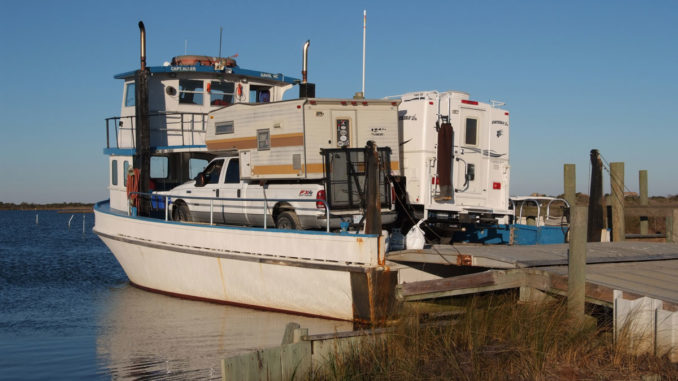
Fall surf-fishing run is reason plenty to head back to basics on North Carolna’s Cape Lookout barrier islands.
“No phone, no lights, no motor car, not a single luxury
Like Robinson Crusoe, it’s primitive as can be.”
Have you imagined yourself on a nearly deserted island where there with no roads, lights or restaurants? Where the crime rate is zero? Where rush hour traffic might consist of two vehicles heading slowly down the beach a mile or more apart? And on top of that having great fishing right outside your door?
If getting away to this type of place excites you, then get packing, and you won’t need to pack for a long trip.
While you might think this scenario only exists on remote islands in the Pacific, thousands of miles from North Carolina, in fact, in around three or four hours, most fishermen in the Tarheel State can be boarding a private ferry that will drop you off in just such a place and will return to pick you up when you’re ready to leave.
The secluded island that could just as well be 12,000 miles away is known by various names: Davis Island, Cape Lookout, South Core Banks, and Great Island. At more than 23 miles long, this barrier island is just what the doctor ordered if you need a break from the daily hustle and bustle that consumes most of us in today’s breakneck world.
And this might be the best time of year for a fishing visit.
Experiencing the island is easy, but it does require some planning, packing and reservations. Private commercial ferry service is available to get you and your vehicle over. It’s best to plan your trip in advance, especially if you want to experience the fishing during the peak spring and fall trout and drum runs.
First, you’ll want to decide whether you’ll be camping — in a tent or truck camper — or perhaps renting one of the rustic cabins offered by the National Park Service is more your style. If you’re a camper, pick your dates and make a ferry reservation. Cabin reservations are somewhat harder to make, especially during the fall. You’ll need to make them in early January.
The next thing you know, you’ll be waking up on a secluded beach with a cup of delicious coffee from an old aluminum percolator and watching the sunrise.
Bobby Peele has been coming to the South Core Banks for more than 50 years. He and his nephew, David Peele, converted an old, two-wheel drive Mack bread truck into a camper, complete with restroom facilities, cooking and refrigeration, beds, and a loft made from a pickup truck bed cover. If you see their white truck with an orange stripe — the Cape Crusader — you might want to try fishing nearby, just not right on top of them.
Bobby Peele said that his set up was the result of “40 years of engineering.” The camper was built after a tornado came thru and hit their last bread truck. He said, “You want more weight in the back and install 13-inch wide wheels.” He also has a slide-in truck camper for times when his wife joins him. His group leaves its vehicle on the island for parts of the year, as do several dozen others. The NPS charges $10 per week for storage in the long-term lot, so they catch the ferry over with their stuff. Peele brings his bread=truck camper over in the early spring and keeps it there through May, then takes it off the island, bringing it back in September for the fall fishing. That saves some of the expense of a ferry ride.
Some people pull 30-foot campers and set them up on the beach. Longtime fishing partners Clyde Cheek and Jim Thomson keep a white school bus with a big drum painted on the side on the island for much of the year. Cheek has been coming to the island since 1953.
”I’ve spent half the money I’ve ever made coming out here, and if I had it to do it over again, I’d spend even more,” he said.
Around Milepost 43, you’ll see engine blocks and truck frames in the surf along with the old tires. To prevent this from being you, always stay above the high-tide line when driving or camping.
Another group that spends much of its spare time on the island in an old Ford F250 diesel with a frame-mounted camper is Mark Sharp and his son Chris, along with friends Jim Teachey and son Jeff. Mark Sharp said, “Everyone looks out for each other over here.”
One thing to keep in mind is that the weather can change quickly. If a strong wind picks up, you may be better off camping on the lee side. You can always head to the south end of the island to get out of a north or east wind, or to the east-facing side to get out of a south or west wind.
The late Charlie Wolff of Bethania said that once on the island, “You’d better love fishing.” He made multiple, extended trips to the South Core banks for the 20 or so years before he passed away, and he loved surf-fishing. He liked to focus on catching fish for the table instead of trophy hunting, and South Core Banks is the place for this, although huge red drum are regularly landed from the surf during late fall.
March through May and late September through December are the prime fishing seasons, especially the fall. According to Bobby Peele, “Cold weather brings speckled trout out of the sound where they will start biting at the rock jetty. Cast right on the rocks with a MirrOlure.”
Peele, nephew David and great-nephew J.D. Peele all recommend using a suspending MirrOlure in the classic color combination of red back with black dots, sold under code TT 26. Other recommended models are 52M26 (same color but in a slow sinking design) and S52MR-EC (pink/silver/chartreuse with a rattle). Another classic speckled trout lure is a quarter- ounce white jighead with a white/pink Gotcha grub. While the white/pink combination usually works when trout are running, sometimes conditions will require that you switch to other colors, like pink or chartreuse jigheads and white/chartreuse or solid chartreuse grubs.
Typical catches from the surf include channel bass, flounder, bluefish, Virginia mullet, black drum and blowfish. All can be taken on pieces of fresh mullet, shrimp or blood worms and make excellent table fare, which is one reason why so many visitors return year after year. While blowfish are delicious, they need to be cleaned carefully. There’s a trick to getting the sweet back meat out of these ugly critters, and someone on the island will be glad to show you how.
Prime fishing times are usually around the high tide, especially when it occurs just before dark and the tide begins falling just as daylight ends.
One of the prime fishing locations is around the rock jetty on the south end of the island. This is also an excellent location to set up camp, particularly when the wind is from the north. You’ll also usually find a good slough or trough at ramp 42B. A trough is deeper water close to shore that will hold fish waiting for bait to float by. They can be located by looking down the beach for a place where the waves don’t break until they’re almost at the water’s edge.
Be sure to bring all the food, water, and supplies you need —and carry your trash out of the park — when visiting these remote beaches. Along with excellent fishing, there are also bird-hunting opportunities on the island. While not noted as a prime hunting destination, South Core Banks is home to a breeding population of pheasants. The area also offers world-class duck and geese hunting.
So make a few calls, get packing and head east. Who knows, 50 years from now, you may be looking back on a life of secluded island camping and fishing.
DESTINATION INFORMATION
HOW TO GET THERE — The barrier island that is the South Core Banks, part of the Cape Lookout National Seashore, is accessible only by commercial ferry from the town of Davis, which is 160 miles east of Raleigh on US 70, east of Morehead City. Davis shore Ferry Service (252-729-3474) is a fourth-generation family business started in the early 1960s. Ferry service, bait, tackle and ice are available, as well as compressed air for re-inflating your tires when returning to the mainland.
BAIT/SEAFOOD — B & J Seafood, 1101 Old US Highway 70W in New Bern (252-637-1552). Call ahead and pay by credit card, and your bait and seafood will be left iced down in a cooler beside the building if you are coming by after hours.
ACCOMMODATIONS — Along with tent, camper or converted bread truck/school bus camping, cabins maintained for rental by the National Park Service. Reservations can be made at www.nps.gov/calo/planyourvisit or www.cape-lookout-cabins-camps-ferry-davis-nc.com. Thirty-two rustic cabins that sleep four to 12 persons — some with screened porches — are available. They are wired for generators (you supply the generator and fuel), and have gas hot=water heaters, private bathrooms, tables, chairs, kitchen with cabinets, and a propane cook stove with oven. You’ll need to make your cabin reservation in early January to get an October/November reservation. In 2013, rates ranged from $54 to $164 per night, depending on the size of the cabin and season.
FISHING INFO — Find the latest fishing reports and other information at drumwagon.com. You can also ask questions and receive advice/feedback from seasoned veterans on this site.
BEACH DRIVING — A 4-wheel drive vehicle is highly recommended, however, experienced visitors can be seen using 2-wheel drive, converted bread trucks and school busses to get around. These vehicles have typically been equipped with extra-wide tires and are set up with additional weight toward the rear. While it’s a little scary the first time you pilot a 4-wheel drive vehicle on sand, you should be fine if you deflate your tires down to 20 to 25 pounds or pressure — some go even lower. That allows the tires to spread out so they float on top of the sand. And while you might think that driving with the extra weight of a 3,000-pound truck camper would increase the odds of getting stuck, it actually helps by increasing the spread of the tires.
ON FOOT — While a 4-wheel drive vehicle will greatly increase your mobility, it’s not absolutely necessary to own one to visit the island. Many groups park on the mainland at the ferry office and load their gear on the ferry. Sturdy wagons are provided to carry your stuff to a cabin. The beach is very close to the main camp, so you can use a beach cart to carry your stuff back and forth to the beach from your cabin.
MAPS — DeLorme North Carolina Atlas and Gazetteer, 800-452-593, www.delorme.com. GMCO’s Chartbook of North Carolina, 888-420-6277, www.gmcomaps.com.

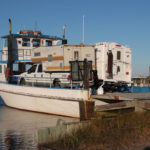
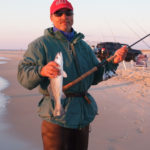
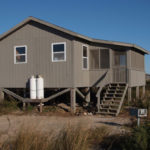
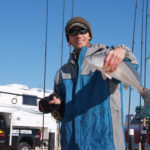
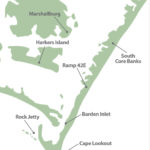
Be the first to comment